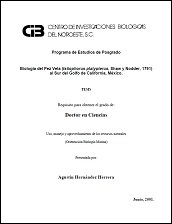NUTRIMENTAL POTENTIAL OF RED DOLICHOS, BROWN DOLICHOS AND COWPEA FOR GREEN MANURE PRODUCED UNDER THREE TILLAGE SYSTEMS
[POTENCIAL NUTRIMENTAL DE FRIJOL DOLICHOS ROJO, DOLICHOS CAFÉ Y YORIMON COMO ABONO VERDE PRODUCIDOS BAJO TRES SISTEMAS DE LABRANZA]
Autor
FELIX ALFREDO BELTRAN MORALES
JOSE LUIS GARCIA HERNANDEZ
FRANCISCO HIGINIO RUIZ ESPINOZA
LIBORIO FENECH LARIOS
BERNARDO MURILLO AMADOR
ALEJANDRO PALACIOS
ENRIQUE TROYO DIEGUEZ
Metadatos
Mostrar el registro completo del ítemResumen
"The nutrimental content of N, NO3-N, P, K, Mg, Ca, Mn, Zn, Cu, Fe, and B, was evaluated in three bean cultivars of two species with potential to be used as green manure. Cultivars were the red lab-lab bean (RL) (Lablab purpureus), brown lab-lab bean (BL) (L. purpureus) and cowpea (CW) (Vigna unguiculata). Three tillage systems were assayed: conventional tillage (CT), minimum tillage (MT) and optimal tillage (OT). Results showed that the nutrimental content of N, NO3, P, K did not evidence statistical differences (P≤0.05) among bean cultivars and tillage systems. However, the greater content of N was in BL-CT with 4.85%. The content of P varied from 0.38 to 0.41% and the concentration of K from 2.40 to 2.84%. Ca showed the highest concentration in RL-OT with 2.88%, while the lowest percentage was evidenced by CW-CT, with 2.12% (P≤0.05). The highest percentage of Mg appeared in CW-OT with 0.89% and the lowest
concentration was registered for BL-CT, showing 0.52% (P≤0.05). The highest Fe concentration was observed in RL-OT with 0.15% and the lowest in BLCT and RL-CT, with 0.10%. The Mn content was significantly greater in CW without concerning the tillage system with 0.39% and the smallest concentration was obtained in RL-MT with 0.17%. The greatest percentage content of nutriment B was observed in BL-OT, RL-CT, CW-MT and CW-OT, from 0.024 to 0.030%. In contrast, the lowest content of B was found in RL-MT with 0.015%. The content of Zn did not showed statistical differences respect to the cropping system; the lowest concentration of Zn was observed in CW-OT with 0.0026% and the highest percentage in BL-OT with 0.0040. Cu was significantly highest in BL-CT, BL-MT, BL-OT, RLCT, RL-MT, RL-OT and CW-OT, being BL-MT and BL-OT the combinations with the highest concentration (0.0061%), while the lowest concentration was observed in CW-MT and CW-CT, with 0.0048% and 0.0044%, respectively." "Se evaluó el contenido de los nutrimentos N, NO3-N, P, K, Mg, Ca, Mn, Zn, Cu, Fe y B en tres cultivares de frijol de dos especies con potencial para ser utilizados como abono verde. Los cultivares fueron: dolichos rojo (DR) (Lablab purpureus), dolichos café (DC) (L. purpureus) y yorimon (YO) (Vigna unguiculata). Se utilizaron tres sistemas de labranza para la producción: labranza convencional (LC), labranza mínima (LM) y labranza óptima (LO). Los resultados mostraron que con respecto al contenido nutrimental de N, NO3, P y K no existió diferencia estadística (P≤0.05) entre los cultivares de frijol y los sistemas de labranza utilizados; sin embargo, el mayor contenido de N se encontró en DC producido en LC con 4.85 %. El contenido de P fluctuó entre 0.38 hasta 0.41 %. Con relación al K se encontró un rango de concentración de 2.40 a 2.84 %. El Ca se encontró en mayor concentración en DR-LO con un 2.88 %, en contraste el menor porcentaje se encontró en YO-LC con un 2.12 % (P≤0.05). Con respecto a Mg se observó el mayor porcentaje en el cultivar YO-LO con un 0.89 % y la menor concentración se encontró en DC-LC presentando un 0.52 % (P≤0.05). El comportamiento de los nutrimentos menores fue diferente. La mayor concentración de Fe se encontró en DR-LO con 0.15 % y la menor en DC-LC y DR-LC con 0.10 %. El contenido de Mn fue significativamente mayor en YO sin importar el sistema de labranza utilizado con 0.39%, y la menor concentración se obtuvo en DR-LM con 0.17 %. El mayor contenido porcentual de B se localizó en DC-LO, DR-LC, YO-LM y YO-LO con un rango de entre 0.024 a 0.030 %; en contraste, el menor contenido se manifestó en el DR-LM con un 0.015 %. Se observó que con respecto al contenido de Zn no hubo diferencia estadística con respecto a los cultivares y los sistemas de labranza utilizados en su producción, el menor contenido de Zn se presentó en YO-LO con 0.0026% y el mayor porcentaje se observó en DC-LO con 0.0040. El contenido del nutrimento Cu fue significativamente mayor en DC-LC, DC-LM, DC-LO, DR-LC, DR-LM, DR-LO y YO-LO, siendo DC-LM y DC-LO en donde se presentó la mayor concentración con 0.0061% y la menor concentración se encontró en YO-LM y YO-LC con un 0.0048 % y 0.0044 % respectivamente. "
Colecciones
Ítems relacionados
Mostrando ítems relacionados por Título, autor o materia.
-
PROMOCIÓN DEL PERIFITON PARA EL CULTIVO DE CAMARÓN BLANCO: HACIA UNA ACUICULTURA ECOLÓGICA
DOMENICO VOLTOLINA LOBINA; JUAN MANUEL AUDELO NARANJO; MARIA DEL ROSARIO PACHECO MARGES -
Suelo y Erosión
YOLANDA LOURDES MAYA DELGADO


